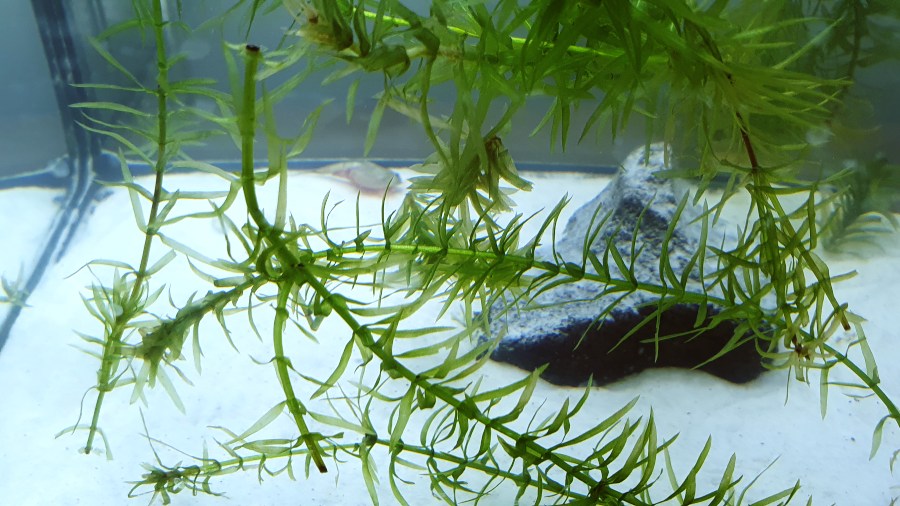Guide
Running in the aquarium: This is how long the aquarium run-in phase should last
You have started your Triops breeding full of joy, the first nauplii have hatched and after about two weeks they are ready to move into a larger tank or aquarium. You have dealt with the subject of water and water values in Triops breeding in detail beforehand. Ideally, you should have already found out how to run in the aquarium before moving your Triops into an aquarium. An aquarium is a complex ecosystem that requires an aquarium run-in period. This ecosystem has to establish itself first and will become more and more solid over time. Before the first primeval crabs can be kept in the aquarium, the aquarium must be properly run in. Under no circumstances should you put the Triops into the freshly filled aquarium immediately, as the microbiological balance must first be established and otherwise the animals may die. In this article I explain how long the aquarium run-in period should be and how you can create an optimal living environment for your Triops.

Aquarium run-in phase: Why should you run in the aquarium?
At the beginning of every breeding, the aquarium should be properly run in so that the microbiological balance is established. A natural environment for the aquarium inhabitants such as primeval crustaceans and fish is only created after the aquarium run-in phase. When organic substances such as plants, fish or fish food are decomposed in the aquarium, ammonia and ammonium are released into the water as a result of metabolism. While ammonium is relatively harmless and is consumed by plants as fertiliser, ammonia is highly toxic. Bacteria are the basic prerequisite for functioning decomposition processes in the aquarium. Ammonia and ammonium are converted into toxic nitrite (NO2) by Nitrosomonas, while Nitrobacter convert the nitrite into the less dangerous nitrate. To prevent the Triops from dying due to a nitrite peak, you should start a new aquarium.
Start up aquarium: Ammonium peak and nitrite peak
As a rule, the ammonium peak is the first peak during the aquarium run-in phase. In this early phase, not enough bacteria have formed in the tank. Although ammonium is not yet a danger in this phase, there should still be no Triops in the aquarium, because ammonium turns into ammonia at a pH value above seven. And ammonia is – as already described – highly toxic for the aquarium inhabitants.
Nitrite is formed as a product of the nitrogen cycle, in which dead fish or snails are decomposed and the waste products produce toxic substances. Ammonia (NH3) and ammonium (NH4) also enter the water through organic waste such as food, plant remains and excreta and are converted to nitrite by the bacteria. In order to prevent the nitrite peak, you as a breeder must start the aquarium properly.
→ More information can be found in the main article: Too much nitrite in the aquarium: For these reasons nitrite is harmful in the aquarium
Start the aquarium properly and slowly introduce the Triops
The most frequently asked question when breaking in an aquarium is how long it should last. How long should this be? A fixed duration is difficult to determine and depends on many factors. The following factors play a role:
- Aquarium size
- Plants in the aquarium
- Use of a filter
- Pre-contaminated water from another aquarium that has been run in.
How long should the aquarium be run in? Different sources give different guidelines. Some aquarists recommend a period between two and six weeks, others recommend at least four weeks. From my experience, I can say that the guideline value of four weeks has proven successful for me. After that, the nitrite peak should be over and the first Triops can be introduced. Since I use the aquariums for several generations of Triops in my breeding (see 2PO procedure of Triops Galaxy), my aquariums are in continuous use and therefore always run in.
During the run-in phase you should use plants from the beginning and, if possible, already treated water with filter sludge from an established aquarium. You should also populate the aquarium with a few snails, as they are not so sensitive to high nitrate levels. The snails produce ammonium through their excretions and give the Nitrisomonas the opportunity to multiply.
Since the bacteria first have to get used to the ammonium producers, the Triops should only be added gradually. You should measure the water values before and after adding the Triops. You can buy appropriate test sets for this purpose in specialist shops. What you can do if the nitrite levels are too high can be read in the blog article on nitrite levels linked above.
→ You can find out how to clean and maintain the aquarium in the main article: Cleaning the aquarium properly
Aquarium run-in phase: Conclusion
The run-in phase is a headache for many breeders, as there is a lot to consider here and beginners in particular lack the necessary experience and the right measure. As with all things in life, the motto here is: Practice makes perfect. Especially in the beginning you will feel awkward and sometimes lost, but with every breeding you gain more and more experience and take this with you into the next breeding. It is important not to take the start-up phase lightly and to stick to the recommended period. The Triops will thank you for it.
- Vietnam: Hundreds of thousands of fish die due to drought and heat - 3. May 2024
- Introduction to the basics of ichthyology - 28. April 2024
- Palaeontology: Fossil traces from China point to raptors - 27. April 2024